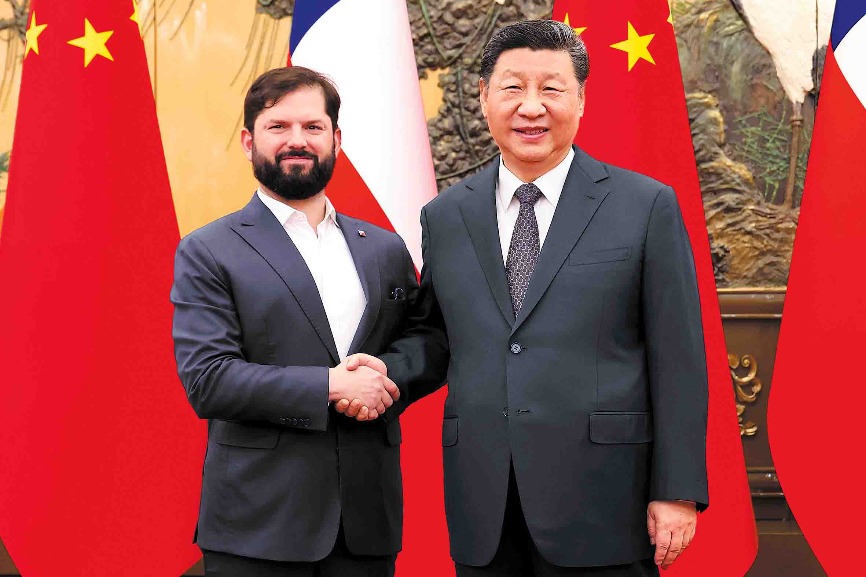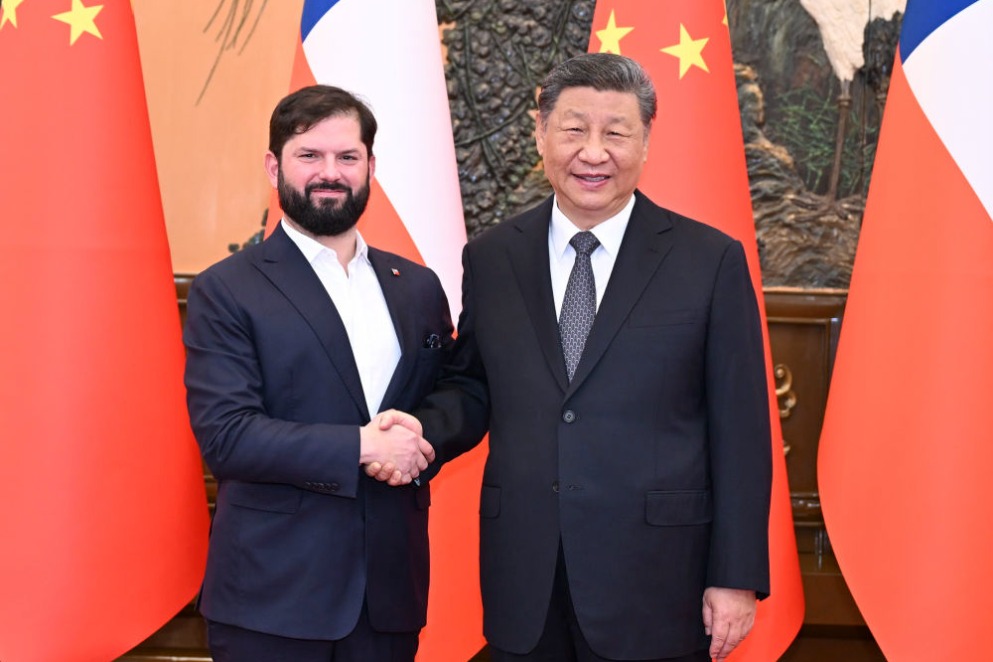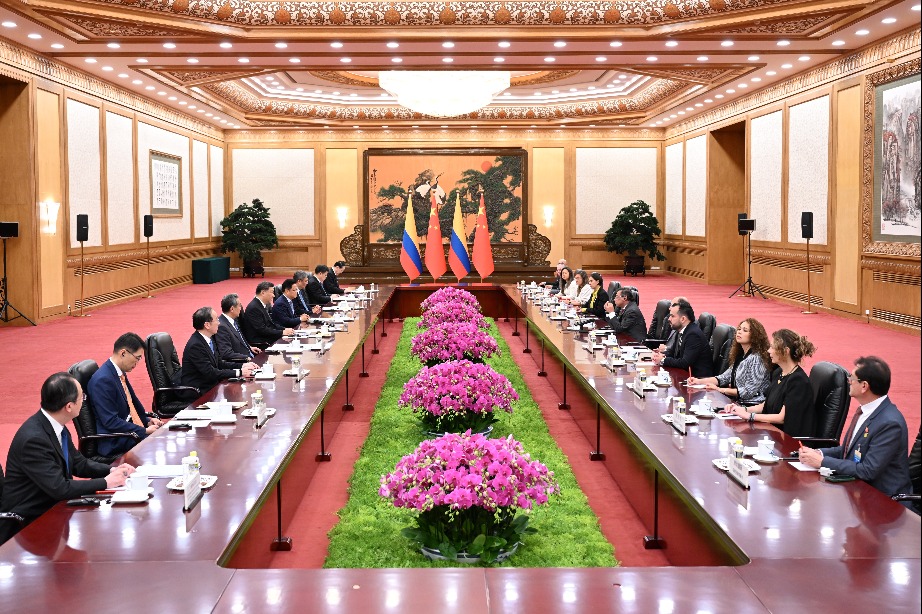Golden gateway


Aligning the Eurasian Middle Corridor and the Belt and Road Initiative set to boost Central Asia's role and significance as a transport hub
The Middle Corridor, also known as the Trans-Caspian International Transport Route, is a key trade route connecting China and Europe via Central Asia and the South Caucasus. It holds considerable strategic and economic significance.
As transportation and other infrastructure connectivity has been continuously enhanced, freight volume through the Middle Corridor has begun to rise. However, growth in freight volume was modest before 2022, because the route was largely viewed as a supplementary alternative to the Northern Corridor which connects China with the European markets via Russia.
The onset of the Ukraine crisis in 2022 triggered off a significant decline in the reliability of the Northern Corridor. In contrast, the Middle Corridor has gained prominence as a primary transportation route, thus accelerating growth in transport volumes and winning increasing global attention.
Countries along the route have been doubling down on the construction of the Middle Corridor since the start of the Ukraine crisis. In November 2022, Georgia, Turkiye, Azerbaijan and Kazakhstan signed a 2022-27 framework agreement for the development of the Middle Corridor and elimination of barriers hindering its development. In October 2023, Kazakhstan, Azerbaijan and Georgia jointly created Middle Corridor Multimodal Ltd to offer one-stop logistics services. In June 2024, the Trans-Caspian Transport Corridor Coordination Platform was launched, which has further strengthened cooperation between the Central Asian nations and the European Union.
In July and September 2024, China signed memoranda of understanding with Azerbaijan and Georgia on developing the Middle Corridor for the China-Europe railway express, committing to the development of the Middle Corridor. And shortly after, China joined Middle Corridor Multimodal Ltd. In November 2024, China and Turkiye held the first meeting of their leading groups on the alignment for the development of the Belt and Road Initiative and the Middle Corridor.
Driven by the concerted efforts and ongoing cooperation of countries along the route, the potential of the Middle Corridor is rapidly being unlocked. In 2024, cargo volume through the Middle Corridor reached 3.332 million metric tons, a 20.55-percent increase from the previous year, and the container volume grew by 175.61 percent to reach 56,500 TEUs. According to a World Bank forecast, the cargo throughput of the Middle Corridor could reach 10 million metric tons to 11 million metric tons by 2030.
The rise of the Middle Corridor is partly driven by geopolitical developments, but it is also attributable to the strong solidarity and cooperation among nations. First, due to the confrontation between Western countries and Russia after the Ukraine crisis, Western nations have boosted political support for and investment in the Middle Corridor in a move to weaken the Russian-dominated Northern Corridor.
Second, Central Asian countries have long aspired to become a transportation hub between Asia and Europe, aiming to lower logistics costs and boost revenues from the transit trade. Participation in the Middle Corridor not only supports this objective but also promotes regional economic integration and strengthens their autonomy and competitiveness in the global economy through enhanced infrastructure and connectivity.
Third, the synergy between the China-initiated BRI and the Middle Corridor presents new opportunities for the significant development of the transcontinental transport route. The China-Kyrgyzstan-Uzbekistan railway, one of the key projects in the alignment of the BRI and the Middle Corridor, has made breakthrough progress.
Looking ahead, the Middle Corridor is expected to bring substantial economic and social benefits to participating countries and nations along the route, and it may become a vital link in the global logistics system.
Since the Ukraine crisis, the route's operating capacity and regional economic cooperation have continued to expand. The surge in freight volume has prompted countries along the corridor to invest in upgrading and expanding infrastructure, including roads, railways, ports, and logistics facilities. These efforts not only improve the reliability and efficiency of the trade route, but also foster trade cooperation, drive regional economic growth, and produce positive spillover effects across other sectors. Increased cargo transport has spurred demand for related industries, such as truck transport, freight forwarding, warehousing, and maintenance of vehicles and equipment, which creates jobs and generates revenue for the countries.
Additionally, the rise in transport volume has also attracted businesses and industries to establish logistics hubs along the route to optimize supply chain efficiency. This clustering effect fosters the development of industrial parks, trade zones, and logistics centers, and — most importantly — drives regional economic growth while shaping a new development model among China, Central Asia, the South Caucasus, Turkiye and Europe.
With a shared goal of strengthening connectivity across the Eurasian continent, the comprehensive alignment of the Middle Corridor and the BRI will inject new impetus into regional economic integration. Such alignment can unlock the geographic, logistical, and economic advantages of Central Asia and the Caucasus, enhance trade and cultural exchanges across Eurasia, and promote the establishment of a closer Eurasian community with a shared future.
Turkiye views China as a strategic anchor of its "Look East" policy. The alignment of the BRI and the Middle Corridor is set to enhance China-Turkiye relations. This cooperation may also serve as a model for broader bilateral engagement and global partnerships.
Central Asia's top priority for participating in the BRI is to drive connectivity with China and the wider world, thereby maximizing its geographic advantages, and since the launch of the BRI in 2013, China-Europe railway express has helped transform Central Asia's geographic disadvantage into an advantage as it has become a key hub for the transit trade. The China-Europe freight trains, with 80 percent passing through Central Asia, have made the corridor one of the vital arteries and lifelines for freight transportation between East and West.
As cooperation between China and Central Asia deepens, the region serves as an essential link for China's land-based access to the European market and a golden gateway to the West. Therefore, aligning the BRI with the Middle Corridor will significantly contribute to the shared development and mutual benefit between China and Eurasian countries.
Pang Weihua is a senior research fellow at the Economic Research Institute of the Belt and Road Initiative at Lanzhou University of Finance and Economics. Zeng Xianghong is a professor and director of the Shanghai Cooperation Organization Research Center at Lanzhou University. The authors contributed this article to China Watch, a think tank powered by China Daily. The views do not necessarily reflect those of China Daily.
Contact the editor at editor@chinawatch.cn.

































